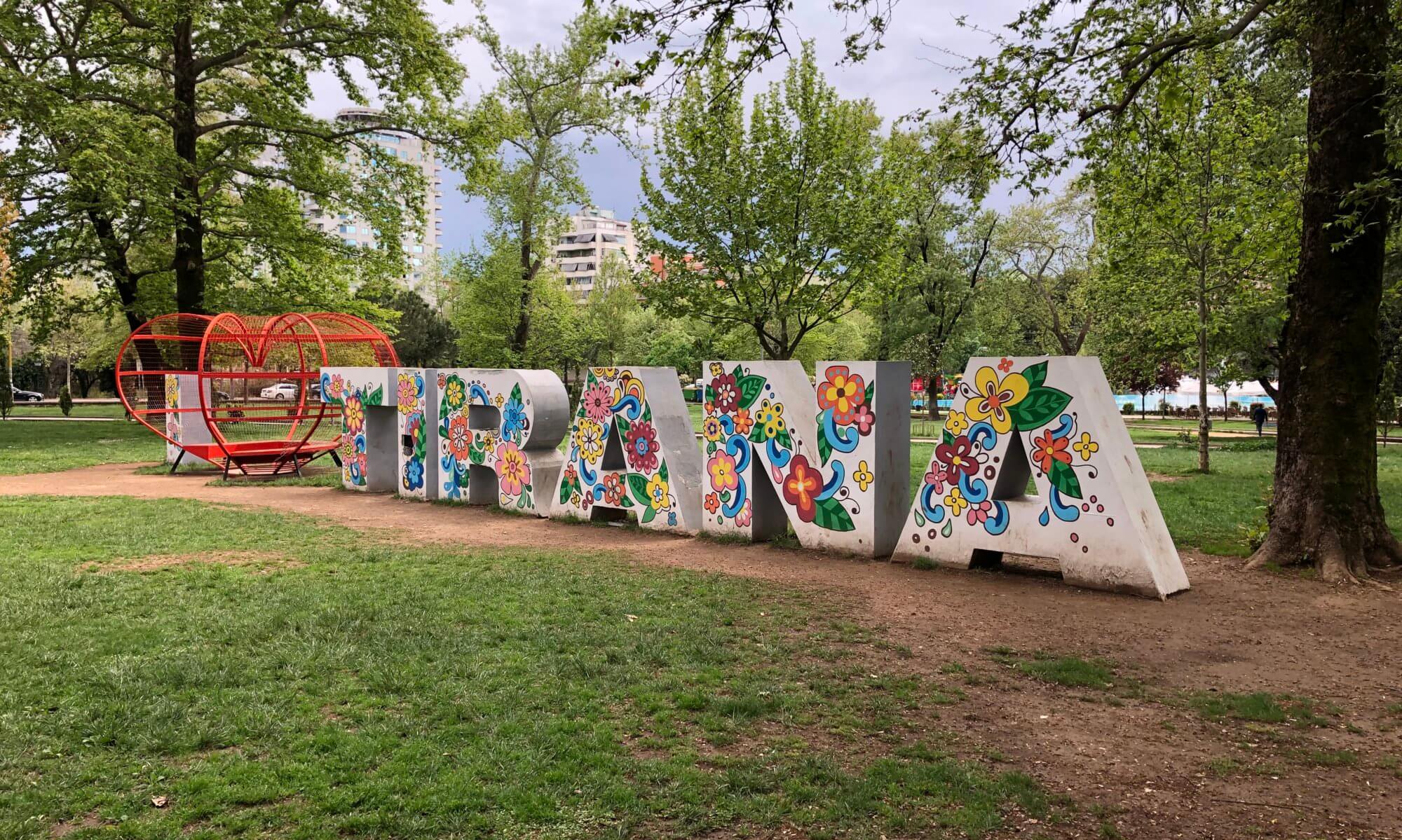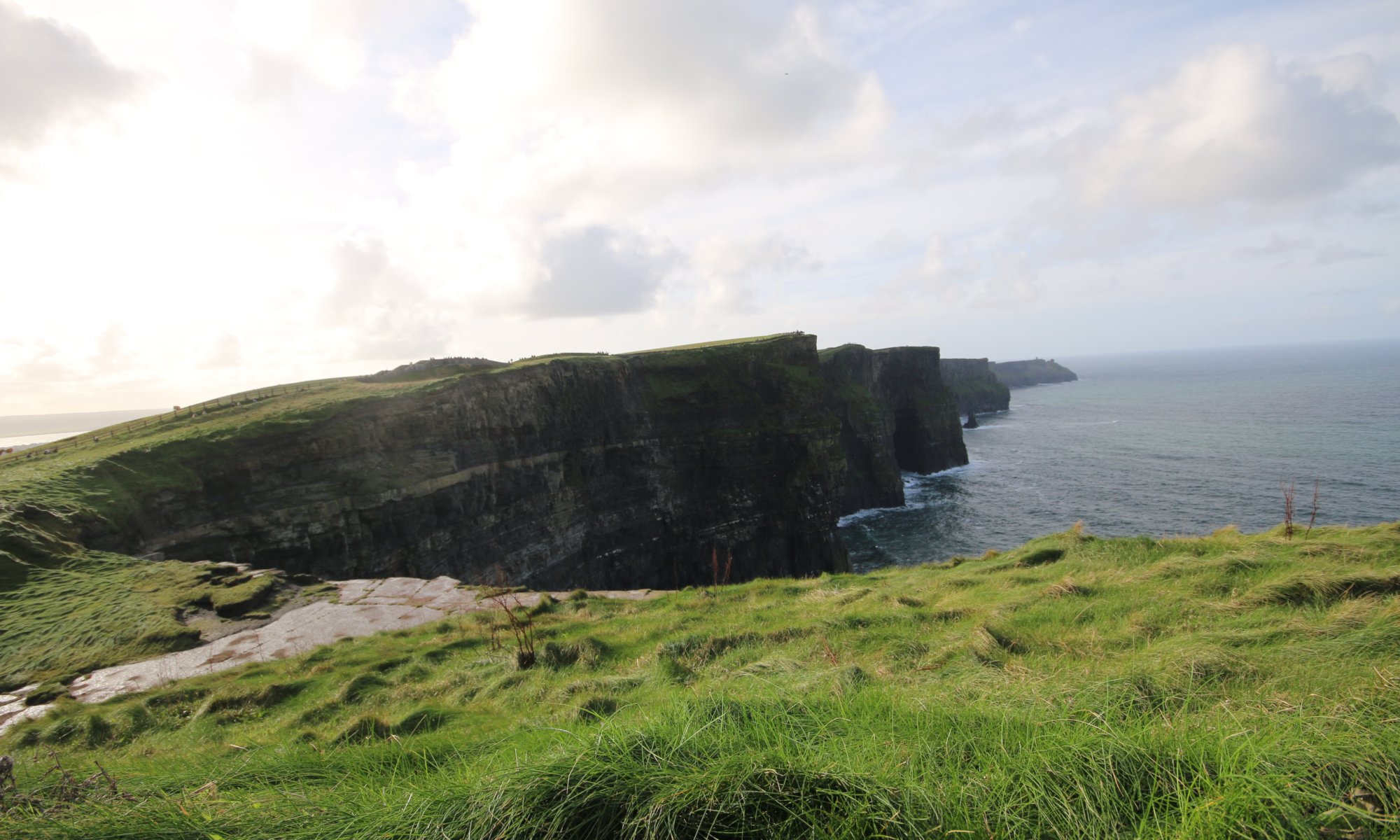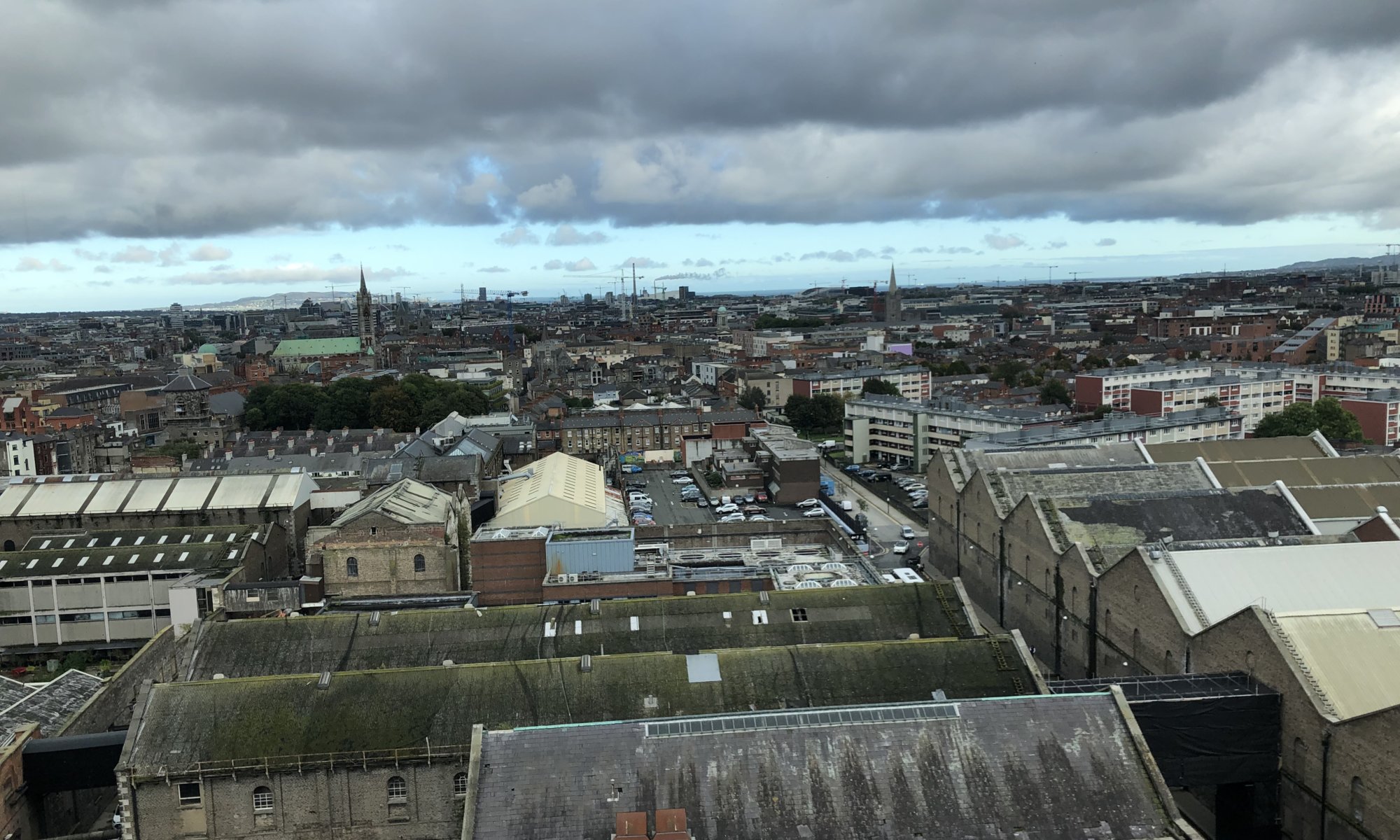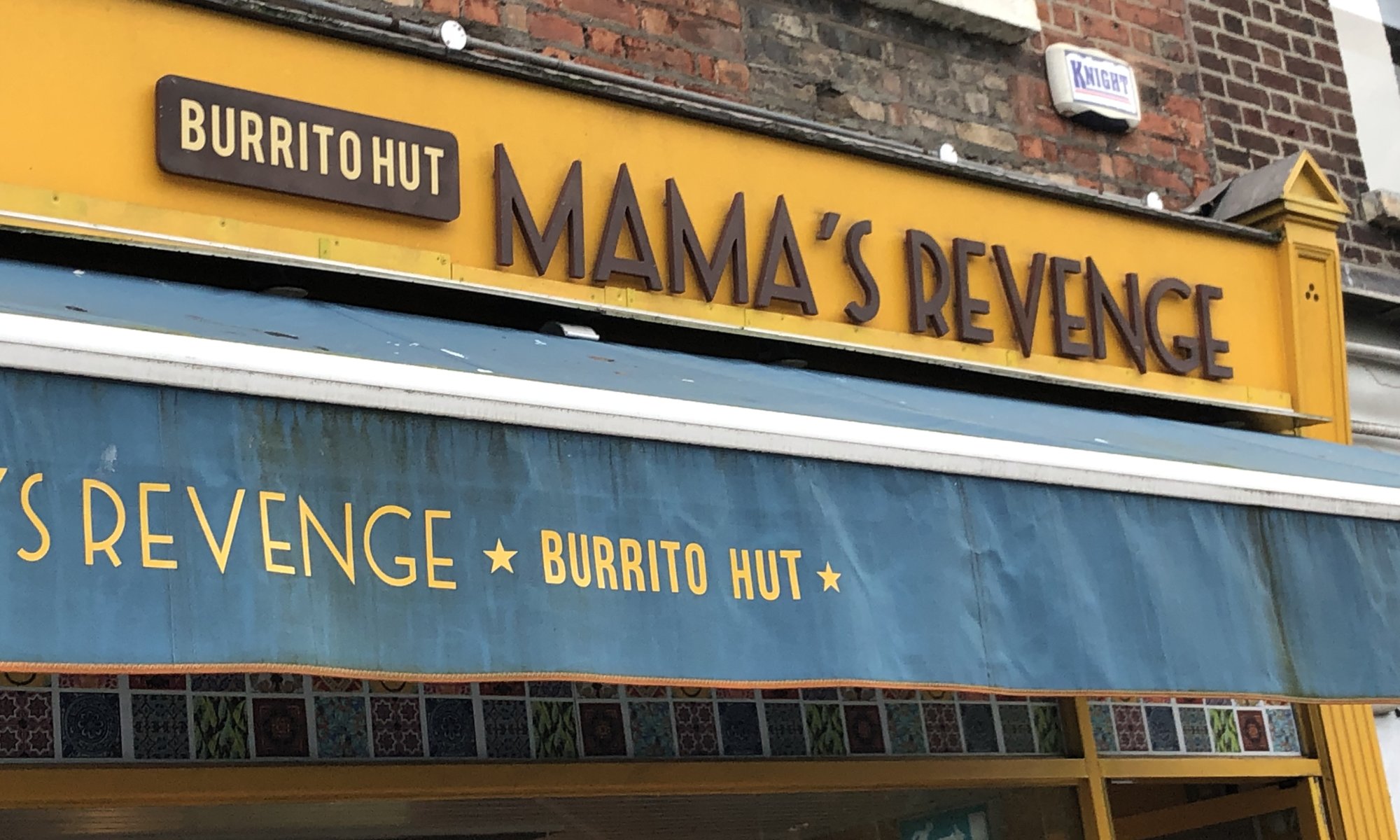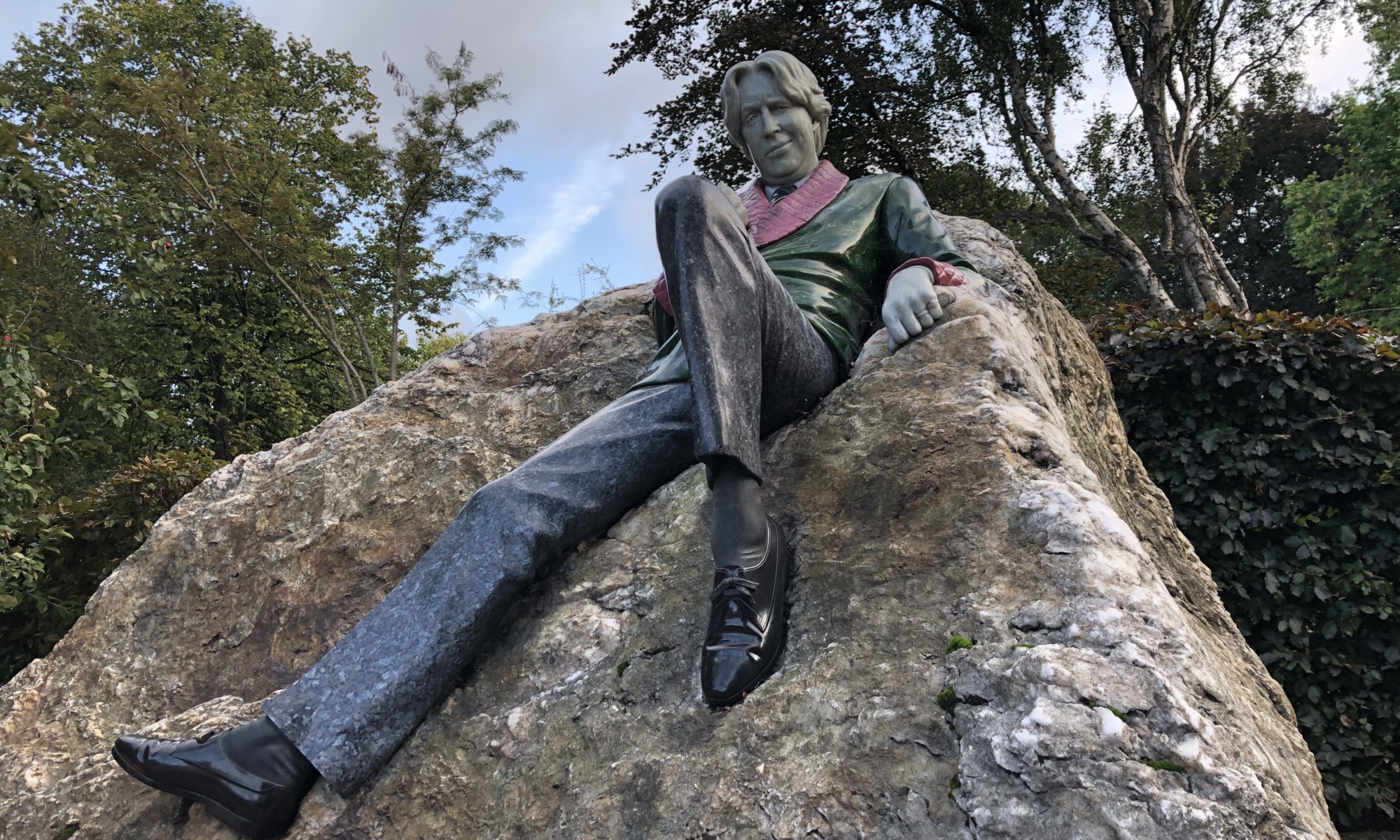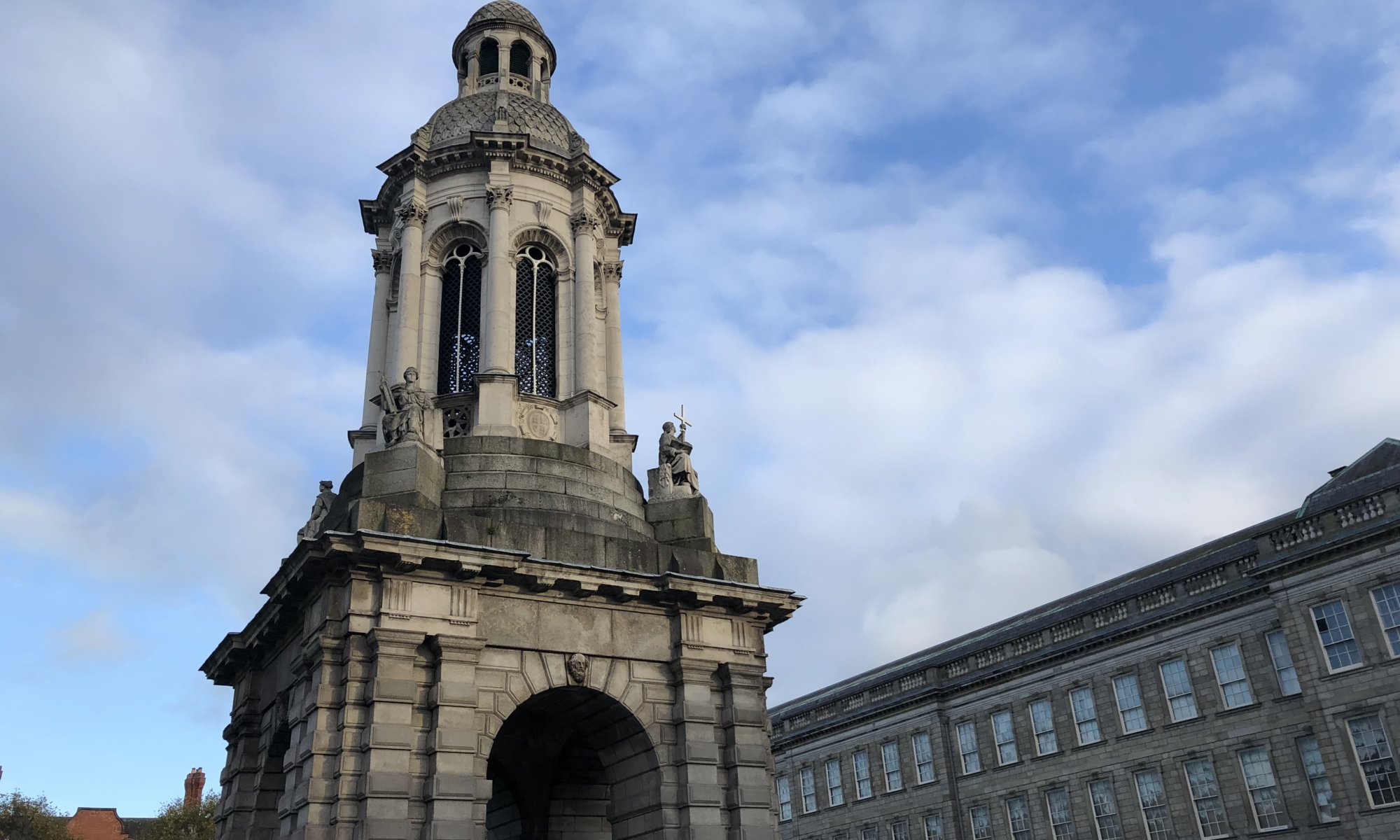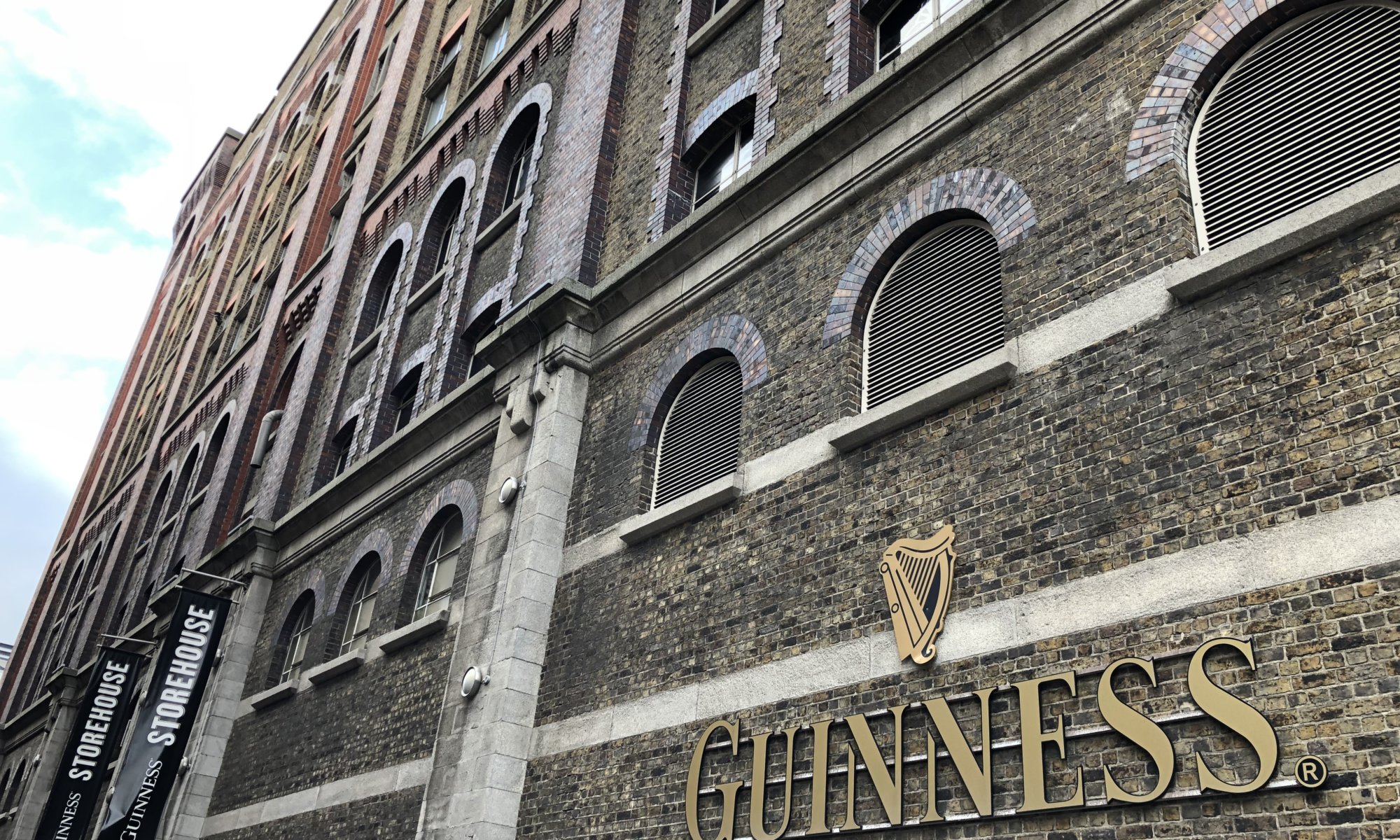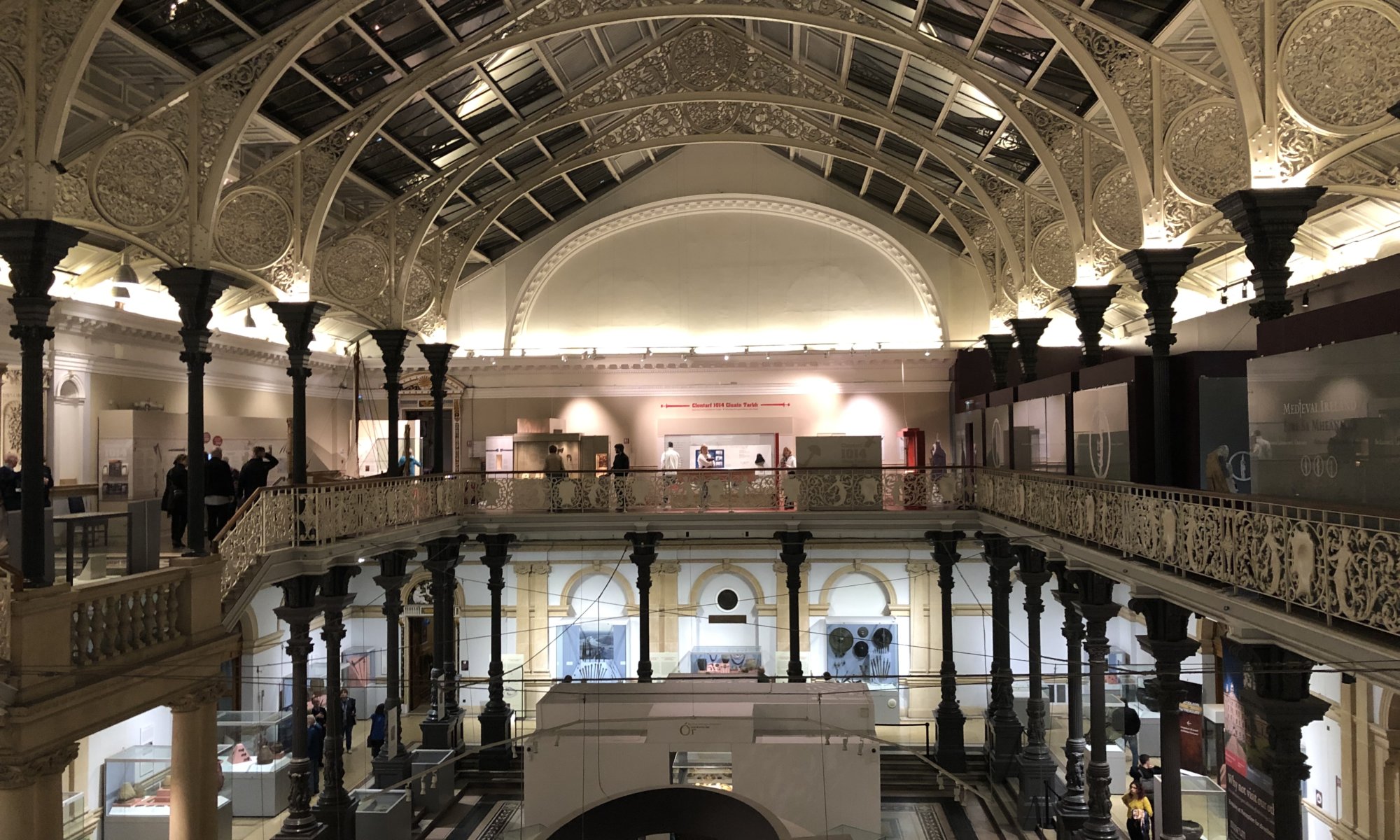The natural highlight in Ireland. A rough landscape, with sea cliffs that are nearly vertical, unreal rock formations and the contrast between the grey stone and the green plants make this a wonderful place. The Cliffs of Moher are not the highest cliffs in Ireland (even though they are 200 meters high) – but the most famous. The touristic infrastructure is very good but also a vast amount of visitors makes this sometimes a massively crowded place. The name comes from an old fort in this region called Mothar.
Continue reading “Cliffs of Moher”Sheep
Geographically, Ireland is a medium-sized rural island that is slowly and steadily being consumed by sheep.
– Dave Barry
Baile Átha Cliath
Dublin or Baile Átha Cliath in the Irish language is the capital city of Ireland. It is located on the river Liffey and not far away from the Irish sea. The name goes back to the Irish word Dubhlinn meaning ‘black pool’ referring to such a tidal pool near the Liffey. The city was first mentioned in the year 140 and in 842 the Vikings created an own settlement in the area. Its history is strongly connected to the history of the country and you can find traces of the Great Famine, the Easter Rising and the Irish independence war.
Continue reading “Baile Átha Cliath”Mama‘s revenge
It is quite impossible to remain hungry in Dublin, Ireland. But if you don’t want to take time for a restaurant visit and dislike standard fast food, you can opt-in for some great tex-mex food served by an independent eatery located between Merrion square and Trinity college. I didn’t find out why they named their place ‘Mama’s revenge‘ – but they serve great burritos and quesadillas to eat there or to take away.
Continue reading “Mama‘s revenge”Merrion square
If you need a place to relax in the city centre of Dublin, Ireland, you can find Merrion square close to Trinity college. It is a garden in the Georgian style which was planned and realized after 1762. It contains a collection of historic street lanterns, an underground air-raid shelter but it is mostly known for a sculpture placed here: Oscar Wilde iconically hanging out on a stone. The author of The Picture of Dorian Gray and The Canterville Ghost was living between 1855 and 1876 in Merrion Square 1.
Continue reading “Merrion square”Trinity college
Trinity college is a well-known university in Dublin, Ireland. Its campus is located directly in the city centre and it was created with Oxford and Cambridge in mind – a real ivy-league university. The university was founded in 1592 (yes, really!) by Queen Elizabeth and is the oldest of Ireland and one of the oldest in the world. Very uncommon for a university is that it is very much visited by tourists. And that is not only because of the beautiful buildings and the campanile (a tower on the campus).
Continue reading “Trinity college”Lovely day for a Guinness
There is one thing everybody does when travelling to Dublin, Ireland: a visit to the Guinness Storehouse, the original place (St. James’s Gate) where this special stout was invented and produced. It is not a museum nor a bar – it is a continuous event for the masses. The exhibition is organized to welcome many spectators and you’re inside a neverending flow of persons that enjoy the edutainment served here: from the ingredients in the basis, over the production process to the roof bar where you get a beer with your ticket.
Continue reading “Lovely day for a Guinness”National museum
If you like to learn something about the past you’ve got many good options in Dublin, Ireland. The capital city is rich of national museums which don’t charge an entrance fee and it’s worth to have a look into all of them. The National Museum of Ireland has an archaeological section in Kildare street where you also can learn about the influence of the Vikings. Many ancient treasures of all ages are on display.
Continue reading “National museum”Mummification
St. Michan‘s church in Dublin, Irland, is something special. At its location a Danish chapel from 1095 was standing, the current building looking a bit like a ruin is dating back to the year 1668. Since the Victorian times, people get here to visit the vaults underneath – even Bram Stoker, the author of Dracula is said to have visited them. The reason for that is a bit spooky: inside the vaults, you can find corpses from the 17th to the 19th century. But they didn’t deteriorate normally, they didn’t become dust – they mummified without human help.
Continue reading “Mummification”St. Patrick‘s cathedral
It is said that at the location of the beautiful St. Patrick’s cathedral in Dublin, Ireland, in the year 450 a spring existed in which Saint Patrick baptised new believers. Later a wooden chapel was built there and from 1191 on it became what it is today: the largest church of Ireland. It is 91 meters long and the tower has a height of 43 meters. In 1860 massive restoration works were necessary, financed by Benjamin Guinness (you know his profession). Most parts of the walls and decorations, therefore, come from the Victorian age.
Continue reading “St. Patrick‘s cathedral”